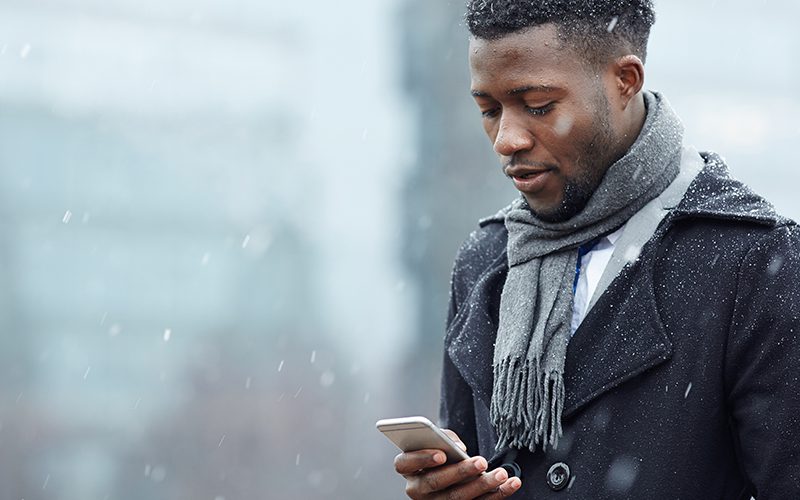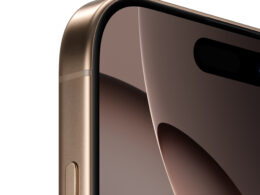Most people have seen a phone overheating message splashed across their device in the hot, summer months. This occurrence is not something that only happens in the summer. Many don’t realize it, but your device can underheat, aka freeze in cold temps. Unfortunately, when this happens there usually isn’t a warning message, but there are signs to keep an eye out for to protect your phone in the cold.
What happens to a cold phone?
There’s a reason “what’s the temperature” is the most frequently asked question for virtual assistants, smart devices, and smart home speakers. Without getting into the details of what happens to a lithium-ion battery, you should know lithium-ion batteries are liquid. Battery University1reports, “Cold temperature increases the internal resistance and lowers the capacity.” Long story short, just like any other liquid-based item, when it’s cold, the molecules shrink and that slows down the performance. And that’s pretty much what happens to your phone. If you’re heading to colder temperatures soon, we’ve got a few tips and tricks to keep your phone safe in the cold.
How to protect your phone in the cold
Keep your device close to your body.
Your body is normally somewhere around 98°F (37°C). Which means you’re a natural source of heat. When you’re out in the cold, try to keep your device close to your body. This will keep the battery from the shock of the freezing temps.
Have a protective case on your device.
You wouldn’t go to a cold climate without your cold weather gear, so why do that to your phone? When it comes to protecting your phone in general, a stylish case is one of the first lines of defense. This is true when it comes to protecting your phone in cold weather as well. The case (whether it’s built to do so, or not) creates a barrier between your device and the outside elements. Having a case on your phone is going to help it stay just a littlewarmer, for a little longer.
Fully charge your battery.
Having a battery that is fully charged is a good idea in any climate. The cold is no different. Because battery power can be significantly reduced in cold temps1, it’s best to have it fully charged to avoid your phone’s battery being completely drained. You can always keep a handy portable charger around to make sure you’re ready, anytime! Charge up your battery and you’ll be good to go!
Let your device warm up before you try to use it.
Once your phone shuts off or has been in the cold for too long, it will take a little extra to get it going again. Don’t panic, your device turning off because it’s too cold, or too hot, it’s your phones defense mechanism to fight the extreme temperatures. Let it warm up, slowly, and thentry to use it. Warming up slowly will help avoid condensation from forming2 in your battery and cut down on the possibility of water damage.
Whatever the temperature is outside, it’s always important to keep your phone safe in the cold and protected from the elements to ensure your device is always ready when you need it and maintains a long life. You don’t want to get caught with a dead phone battery because you didn’t take precautions when it comes to the cold weather!
This article is AT&T sponsored content written by Tiffani Anderson, a TechBuzz contributor. The statements in this article are her own and don’t necessarily represent the positions, strategies, or opinions of AT&T.
1 https://batteryuniversity.com/index.php/learn/article/discharging_at_high_and_low_temperatures
2https://www.pcrichard.com/library/blogArticle/keeping-your-devices-safe-in-the-cold/800264.pcra





